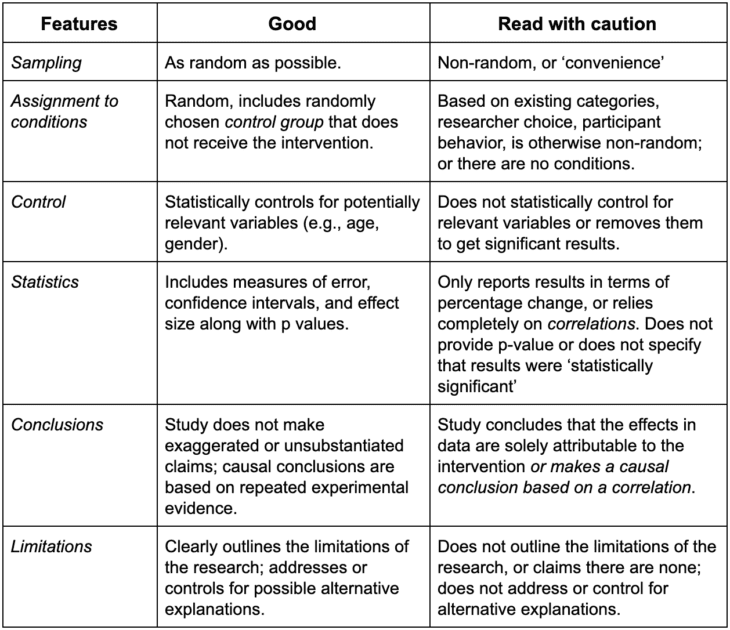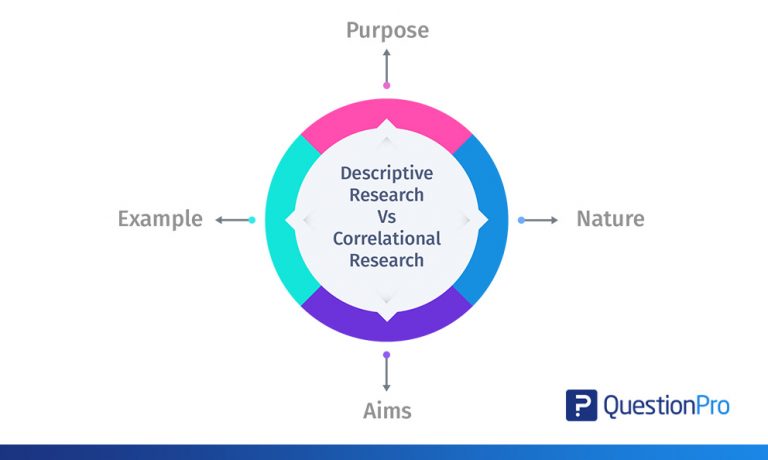In a between-subjects design also known as an independent measures design or classic ANOVA design individuals receive only one of the possible levels of an experimental treatment. Correlation that there is a co-relationship between variables.

Researcher S Spot Quantitative Approaches In This Module The Four Approaches To Quantitative Research Are Described And Examples Are Provided Learning Objectives List And Explain The Four Approaches To Quantitative Research Provide
One or more experimental groups.
. The participants are put into groups through random assignment. The survey research design. Although correlational research cannot determine causality it is useful for predicting the level of one variable based on knowledge of the other variable.
Random allocation to control and experimental groups. There are two variables being studied students performance when they study alone and students performance when they study in a group. Experimental studies allow the researcher to draw conclusions about one.
An experimental design is a randomized study design used to evaluate the effect of an intervention. Test scores will be collected after the students perform solo studies as well as group studies. Here researchers do not intervene and change behavior as they do in experiments.
In an experimental design you manipulate an independent variable and measure its effect on a dependent variable. Features of Experimental Research Design. Correlational analysis examines a number of instances and asserts based on various initial assumptions which we will examine in the section on Statistics.
The goal of experimental research design is to provide more definitive conclusions about the causal relationships among the variables in the research hypothesis than is available from correlational designs. Because a correlational study does not manipulate which variable precedes the. Importantly with correlational research you can examine only.
Correlational Experimental and Quasi-Experimental Research Designs. In correlational research there is no attempt made by the researcher to control or influence variables. Experimental research is causative while correlational research is relational.
One or more control groups. Observational or non experimental designs Observes and records ongoing behavior No intervention. It is important to be able to distinguish between correlational and experimental designs because only well-controlled experimental designs allow conclusions about cause and effect.
Where participants receive the new intervention which effect we want to study. Experimental studies allow the researcher to control the variables in the study while correlational ones involve just looking at the data that already exists. It is only experimental research that can establish a causal relationship between variables.
Random Sampling Traditionally experimental researchers have used. An experimental design where treatments arent randomly assigned is called a quasi-experimental design. However in experimental research the researcher actively observes phenomena after triggering a change in the behavior of the variables.
A true experiment includes several key features. In correlational research the goal is to identify patterns of relationships but not cause and effect. In its simplest form the participants will be randomly divided into 2 groups.
In an experimental research design the variables of interest are called the independent variable or variables and the dependent variable. 81 An Overview of Survey Designs A nonexperimental research design used to describe an individual or a group by having participants complete a survey or questionnaire is called the survey research design. Quasi-experimental and experimental studies test interventions or independent variables presumed causes to see which most influences a dependent variable or presumed effect.
Correlational methodologies and experimental ones are the two approaches to doing research. What is the difference between Correlational and Experimental Research. We begin this chapter with an introduction to the research design that was illustrated here.
Variables makes this a bivariate correlation Morling 2018. Unlike correlational research experimental research allows the researcher to control the variables. For example a nurse might test whether one nursing intervention works better than another.
Correlational approaches Quasi-experimental procedures Simple correlations Non-equivalent control-group Advanced correlational designs techniques Differential research designs Simple linear regression Interrupted time-series designs Advanced regression Single-subject designs techniques Reversal ABA design Path analysis Multiple baseline. In a correlational design you measure variables without manipulating any of them. Focus on difference between two groups.
Correlational design simply investigates the relationship of one variable to another. Research projects can be designed and conducted using different techniques and methodologies. You can test whether your variables change together but you cant be sure that one variable caused a.
He merely records the values of variables. Focus on magnitude and direction of relationship. What is a correlational study vs experimental.
Experimental Research In an experiment one variable is intentionally manipulated by the researchers. In correlational research the researcher passively observes the phenomena and measures whatever relationship that occurs between them. In correlational studies a researcher looks for associations among naturally occurring variables whereas in experimental studies the researcher introduces a change and then monitors its effects.
Correlational research is preliminary and almost always precedes experimental research. How to Use Online Forms for Correlational Research. Other variables are controlled so they cant impact the results.
Not all research uses an experimental design. Not all research uses an experimental design. Explore quasi-experimental case studies and correlational research designs and recognize how they.
3 2 Psychologists Use Descriptive Correlational And Experimental Research Designs To Understand Behaviour Introduction To Psychology 1st Canadian Edition

Correlation Vs Causation Tips For Reading Political Research Studies Sister District Project

Descriptive Research Vs Correlational Research Questionpro

Comparing Descriptive Correlational And Experimental Studies Youtube

Difference Between Correlational And Quasi Experimental Research Youtube
Correlational Research Designs Types Examples Methods

Scielo Brasil An Overview Of Research Designs Relevant To Nursing Part 1 Quantitative Research Designs An Overview Of Research Designs Relevant To Nursing Part 1 Quantitative Research Designs

Chapter 2 Psychological Science Descriptive Correlational And Experimental Research Designs Flashcards Quizlet
0 comments
Post a Comment